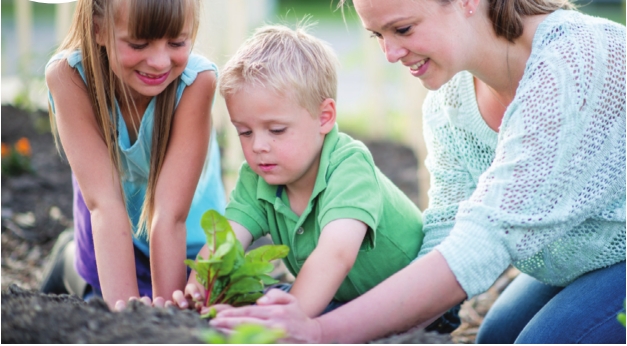
Teach your child how to garden
FAMILY LOVE
Get your children growing plants. Children can learn many things in a garden.
Working with plants and the soil teaches children about nature, the life cycle of plants and the importance of nurturing plants. This spring, find ways for your children to try their hand at gardening. No matter what their ages, gardening can be educational and fun.
Plan it together. Growing food or flowers and experiencing it together can be not only educational but stimulating as well for both child and parent. Parents will have many proud moments as they experience their child’s knowledge growing and their excitement seeing plants push through the soil. If they get to choose the vegetables that are planted, you might be surprised to find the children sampling those foods they have refused and would not even think about tasting before.
It’s not necessary to have a backyard to have a garden. Many vegetables and flowers can be grown successfully in containers. An easy way to garden, with children, is to plant in containers. Container planting can be done outside or inside the house. For a great start, let your children choose the seeds of their favorite foods. They can start out with seeds or small plants, but it is a lot more exciting to see the seeds push through the soil and grow into a plant.
If you and your children want to grow tomatoes, kale, broccoli, carrots, beans, etc., you should use 3-to-5 gallon pot containers. If planting cherry tomatoes, they can be grown in smaller pots, as well as lettuce or spinach.
Container gardening can be done outside the house in one big container such as a small child’s swimming pool. Remember to punch holes in it for drainage and fill it with dirt. Then plant with food or flower seeds. Be sure to fertilize, as suggested.
Provide children with ageappropriate gardening tools. Some plastic toy tools may break easily and frustrate young children. Look for child-sized gardening tools made specifically for small hands and short bodies. Older children may be able to handle adult tools.
While gardening teaches responsibility, youngsters likely will need help with some garden tasks. Work side-by-side with them, letting children do as much as they can. Offer assistance when necessary, so the gardening doesn’t become overwhelming and a chore. It’s supposed to be fun!
If you don’t want to garden outside, lots of fun can be had choosing some fun indoor planting activities such as the following: Potato Container What is needed? A potato, knife or spoon for carving, a scooper, two cotton balls, water, grass seeds and sunshine How fun is this? Cut off each end of the potato and stand it up on one end. Cut out a face on the front side of the potato. Scoop out the top of the potato and place two cotton balls in the scooped out area. Water the cotton balls and drop grass seeds on the watered cotton balls. Place in a sunny window sill and watch the potato head grow hair. The potato may be placed on a flat dish. Planting Popcorn in a Baggie Container What
is needed? Cotton balls, water, popcorn kernels, Zip-lock bag, tape and
a sunny window Place cotton balls that have been moistened in a baggie.
Put some popcorn kernels in the bag and zip it closed. Tape the bag to a
sunny window. Add water as needed. The plants can be put into dirt
after sprouting. Each day look at the progress of the popcorn kernels
turning into plants.
Soft Drink Bottle Container (32 ounce) What
is needed? Two-liter soft drink bottle, small rocks, toothpicks, a
sweet potato and water Sweet Potato Vine – Cut the top off a 2-liter,
clear soft drink bottle (about
5
inches). Put small rocks in the bottom of the bottle. Put toothpicks in
both sides of the sweet potato (not the ends). Place the potato down
into the bottle, narrow side down. Pour water into the bottle until it
half of the sweet potato is under water. Sweet potatoes purchased from a
farmer’s market or whole foods supermarket will sprout quicker as they
will not have been sprayed with a sprouting inhibitor.
As long as the sweet potato is watered, it will continue to grow a purplish vine.
Dianne Glasgow is a family and child specialist at the LSU AgCenter in Caddo Parish.
She can be reached at [email protected], 226-6805 or 464-2552.